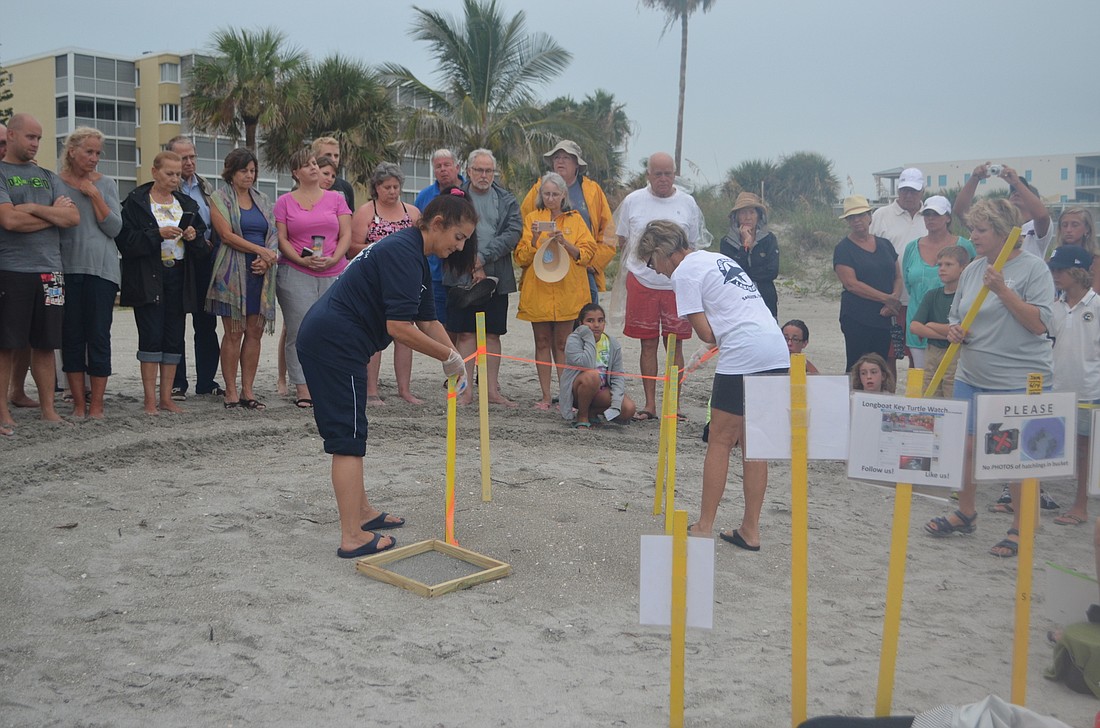- December 13, 2025
-
-
Loading

Loading

On Aug. 7, an adoring crowd watched a group of hatchlings crawl to the water, wishing them well as they began their hunt for food and shelter.
The hatchlings were released during Longboat Key Turtle Watch’s first excavation of the season. Though no hatchlings from the nest remained, volunteers released 31 turtles from Mote Marine Laboratory and Aquarium’s Sea Turtle Hospital.
The excavated nest, located just north of Westchester condominiums, was home to 86 eggs, five of which did not hatch. Excavations are held three days after the hatchlings leave the nest. Typically, each turtle nest holds around 100 eggs.
To excavate a nest, volunteers dig until they find eggshells. Once they find the shells, volunteers measure from the top of the sand to the top of the eggs, then to the bottom of the eggs to determine how far the mother turtle dug before laying her eggs in the chamber.
This nesting female that laid the excavated nest dug 40 centimeters with her rear flippers before laying her eggs. The eggshells were removed from the chamber and placed on the sand for people to see and touch. After the depth is measured, the width is measured, as well.
Turtle Watch President Tim Thurman said the group tries not to interfere with nature; members observe it and capture the data. Humans don’t make it easy for hatchlings to survive, he said.
“Seeing the little hatchlings go out reminds you of all the challenges turtles face, and all these hatchlings are like an inch-and-a-half long, and they have to swim out into the Gulf of Mexico and survive,” he said. “I want to try to do everything we can to help them.”
Only one in 1,000 sea turtle hatchlings survive to maturity.
At the excavation, volunteer Dawn DiFoggio relayed that information to the crowd. While two other volunteers, Sara Heuer and JoAnn Mancuso, excavated the nest, DiFoggio explained the step-by-step process of excavation and shared tips on how to keep turtle nests and hatchlings safe.
To demonstrate just how dangerous beachgoers can make the sand, DiFoggio passed around a photo of hatchlings caught in beach furniture. She reminded the crowd to pick up all trash and beach furniture from the sand after their day on the water.
While Heuer and Mancuso continued to excavate the nest, DiFoggio tested the crowd’s turtle trivia knowledge. (See sidebar.)
Excavations are open to the public. To receive alerts about when the next excavation will take place, sign lbkturtlewatch.com.